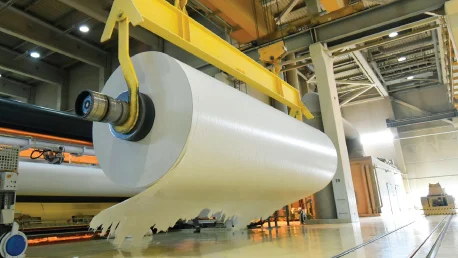PITA (Paper International Technology Association) has published a new study commissioned by DS Smith and Aquapak which shows that innovative, bio-digestible barrier coatings increase paper recycling rates and fibre yield, without compromising functionality thus providing a viable new packaging alternative which is ready and available for use.
Key findings highlighted by the whitepaper
- Soluble barrier promotes improved fibre separation critical to meeting circular economy
- No compromise on packaging functionality
- Hydropol proven to give real improvement when set against current regulations which allow the ‘recyclable’ label to be used if there is up to 15% unrecyclable material in the product
The independent research, ‘’Considerations for process, product and environmental fate testing of soluble bio-digestible barriers for paper and board packaging’, shows that new barrier technologies such as Hydropol provide an alternative to conventional plastic coatings used in paper packaging by promoting improved paper fibre separation and removing plastic waste from the recycling process, dramatically reducing the negative impact of paper packaging on the environment.
To provide a solution to this problem, Aquapak has developed Hydropol, a commercially available fully soluble, biodigestible barrier polymer, which can be adhesive- or extrusion coated onto paper and brings a number of benefits to fibre-based packaging, including oil and grease resistance together with a high gas barrier. It is non-toxic, marine safe, dissolves in water and subsequently biodegrades but still provides the much-needed functionality required for food, drink and household product packaging.
The tests used in the study show that Hydropol is compatible with the processes used by high volume recycling mills and enables high fibre recovery, whilst reducing insoluble single-use plastics which are ejected and sent to landfill or waste to energy. Hydropol is also now proven to give real improvement on current regulations which allow the ‘recyclable’ label to be used if there is up to 15% unrecyclable material in the product. The results obtained in the study provide packaging designers with a clear route as to how to meet the Paperbased Packaging Recyclability Guideline set out by the European association representing the paper industry (Cepi), and which are there to:
- Ensure that the paper fraction of the packaging breaks down into single fibres when pulped within a specified timeframe
- Give preference to polymers and other sealing agents that can be dealt with efficiently by the papermill process and effluent treatment systems and do not compromise the finished product, the production process or the environment whilst being recycled.
A previous study* shows that Hydropol has also been shown to increase some paper strength properties (tear, burst, puncture and tensile strength), allowing coated or laminated papers to be heat-sealed for ‘form, fill and seal’ fibre packaging applications.





